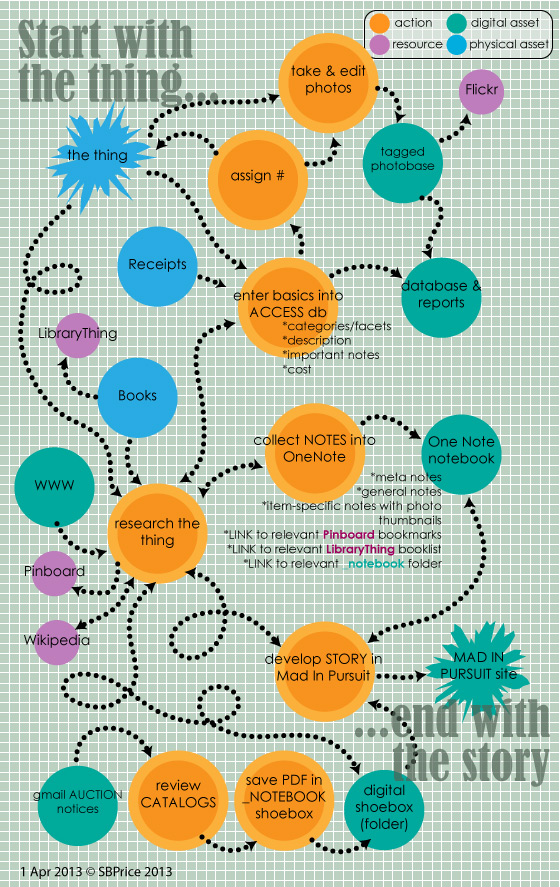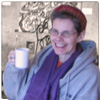Riding the Dragon: diagramming collections management
4.1.2013. I spend a lot of time thinking about THINGS... the hundreds of collectibles around this place, which may or may not be valuable. I feel like one of those old ladies with a houseful of cats -- they hide, they refused to be organized. I loose track.
I want to stuff everything into a database that will give me total control -- the power to know what everything is, all their catagories, where we got them, what they are worth, and how they relate to, well, everything else.
But I've had a breakthrough -- slowly understanding that I can't pound history, culture, and a life's adventures into cells of a spreadsheet. Yes, I have to work it -- probe, investigate, organize -- but the task is not about capturing. It's about liberating -- liberating a cultural or historical thing to tell its story.
It seems so obvious now. Don't try to capture the dragon and put him in the zoo. Ride that dragon!
Okay, smarty-pants, how does one implement such an adventure in concrete terms? We still have to manage the ever-straying "cats" and compensate for our unreliable memory. We still have to construct our "outboard brains." There is still the thing, the receipts, the reference books, the auction catalogs. And how do you learn without some kind of organization? How do you plan for the future without lumping and splitting, without hierarchies, without definitions, without cleaning up the mess?
So I've been demanding answers. What do I do with all the bits of information that cross my desk, without going into obsessive overdrive? How do I take advantage of the internet and all the digital tools I have the skills to use? I wound up tossing out my efforts at a linear workflow and the diagram above emerged. Nothing is linear. Everything is connected.
One thing we want to avoid: enshrining a collection of things as The Collection. Jim is not a hoarder, not an egotist. His pattern has been collect, learn, enjoy, let go, move on. My pattern is to turn everything into a story. So a mantra emerges: Start with the thing, end with the story. In between is mystery, terra incognita, the dark, trackless forest.
To get from thing to story in this mystery-filled landscape, all I have to do is follow the example of great explorers, creatives and mystics. Focus on method. Be disciplined about it. Whether I use OneNote or Evernote, Pinboard or Delicious -- it doesn't matter, as long as I use it consistently and trust it to fill its purpose. The simpler, the better. The more places I have to stick information, the more I lose track of it. As I reviewed all my information hidey holes for this project, I was bewildered by all the information I had, but had forgotten where I put it.
As I write about this, my discovery process feels labored and slow. Shouldn't I have mastered this already? Oh, I shouldn't get distracted by my own journey. So what if I started out thinking I only needed a pocket knife and now I'm lugging a tool chest?
Anyway, here's a quote from "Everything is Miscellaneous: the Power of the New Digital Disorder": "The task of knowing is no longer to see the simple. It is to swim in the complex." Or to ride the dragon.

